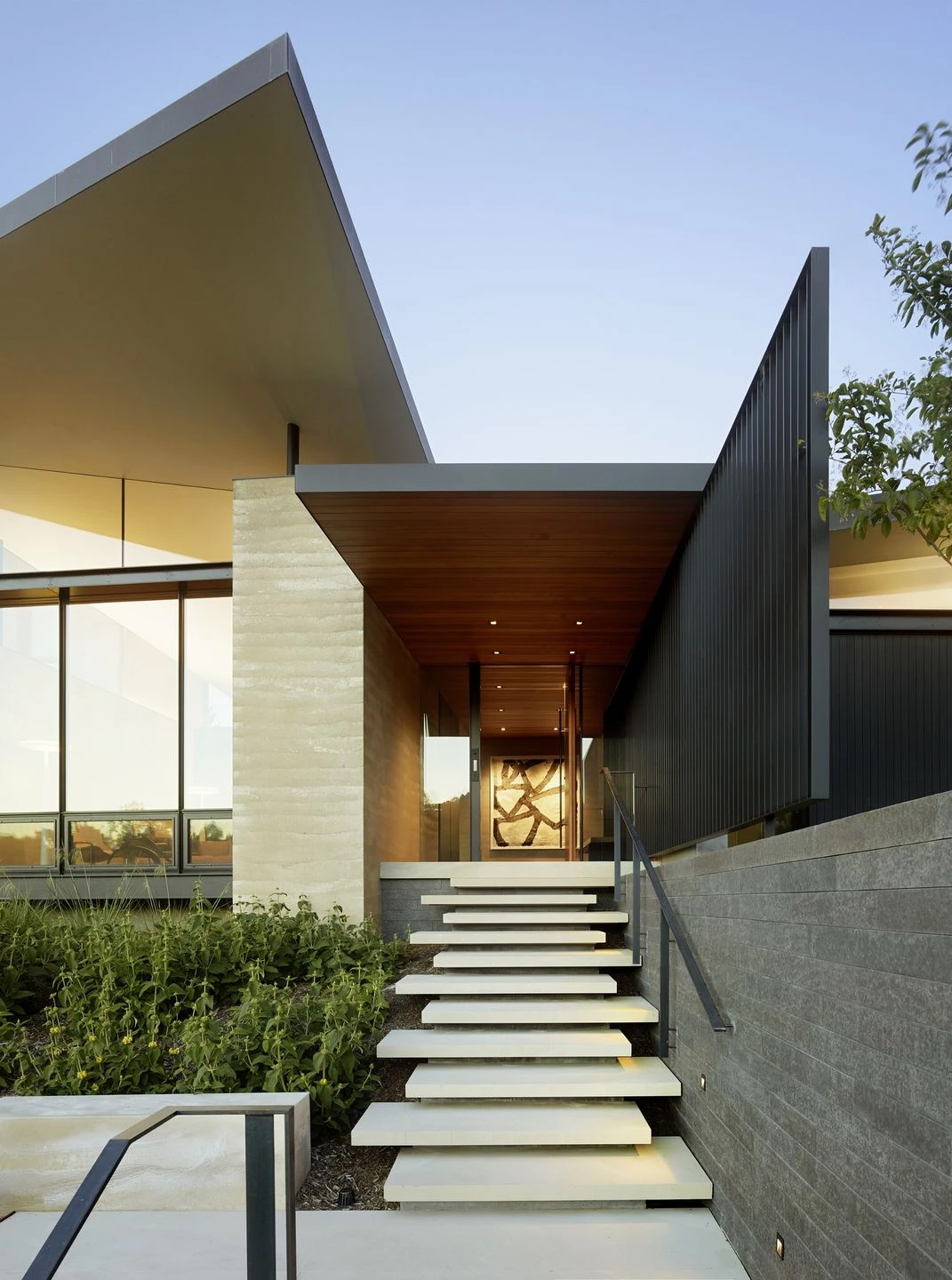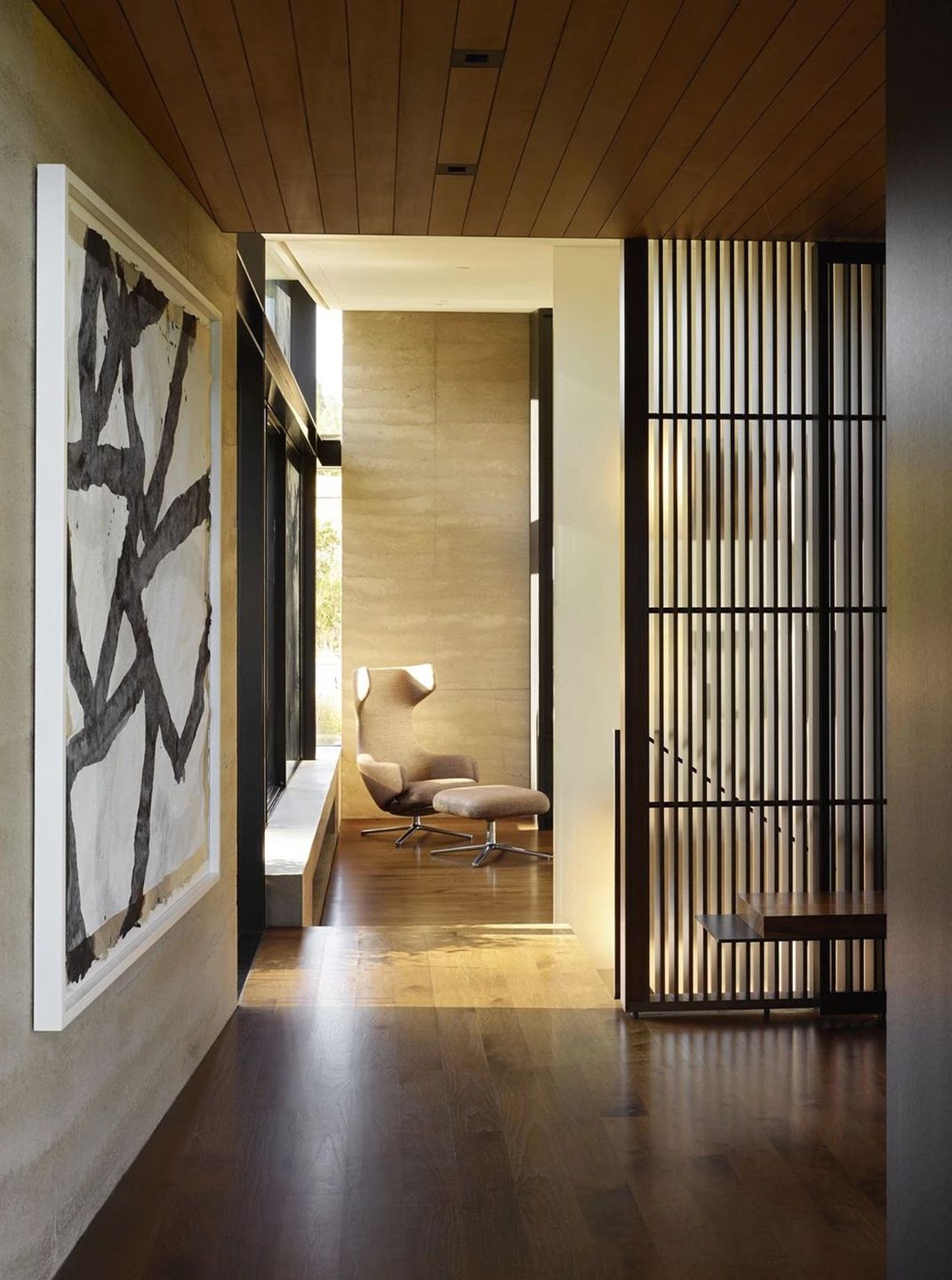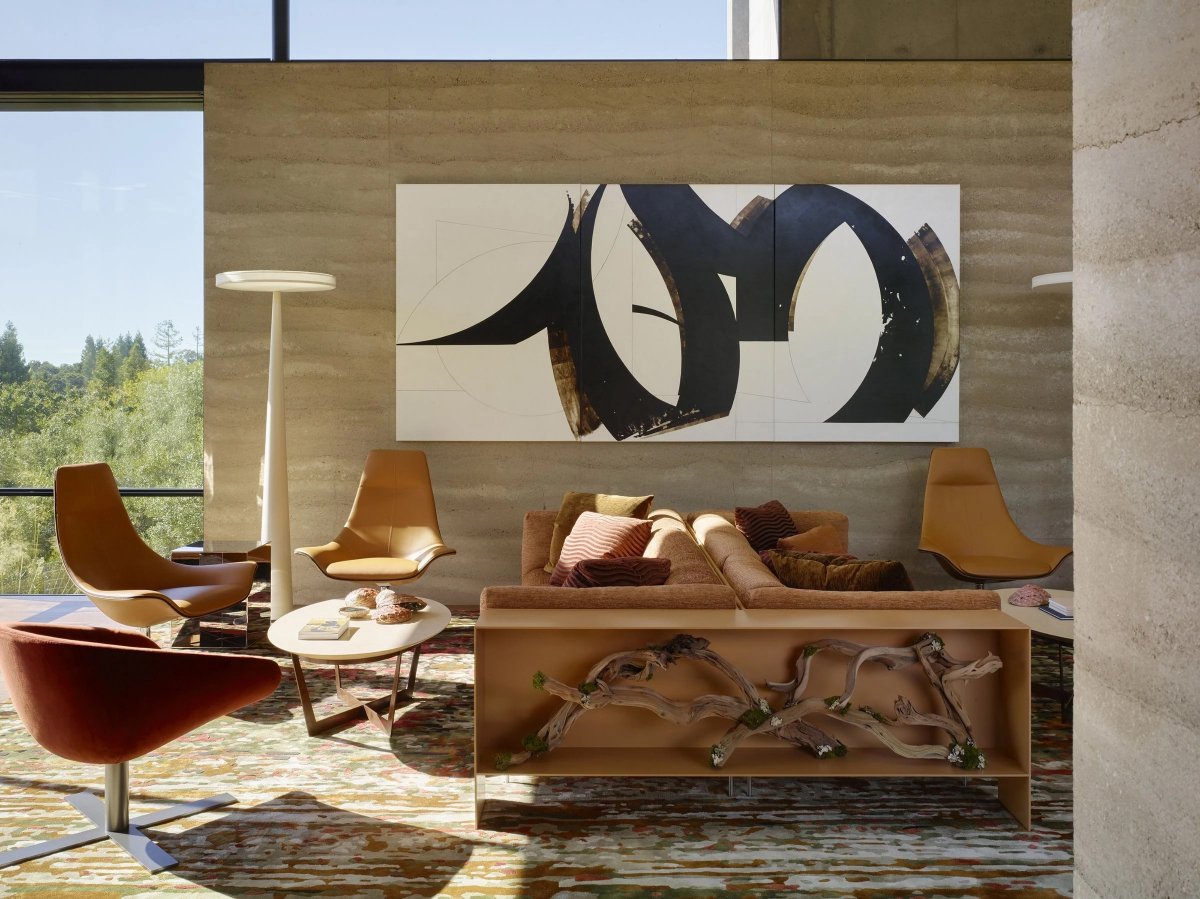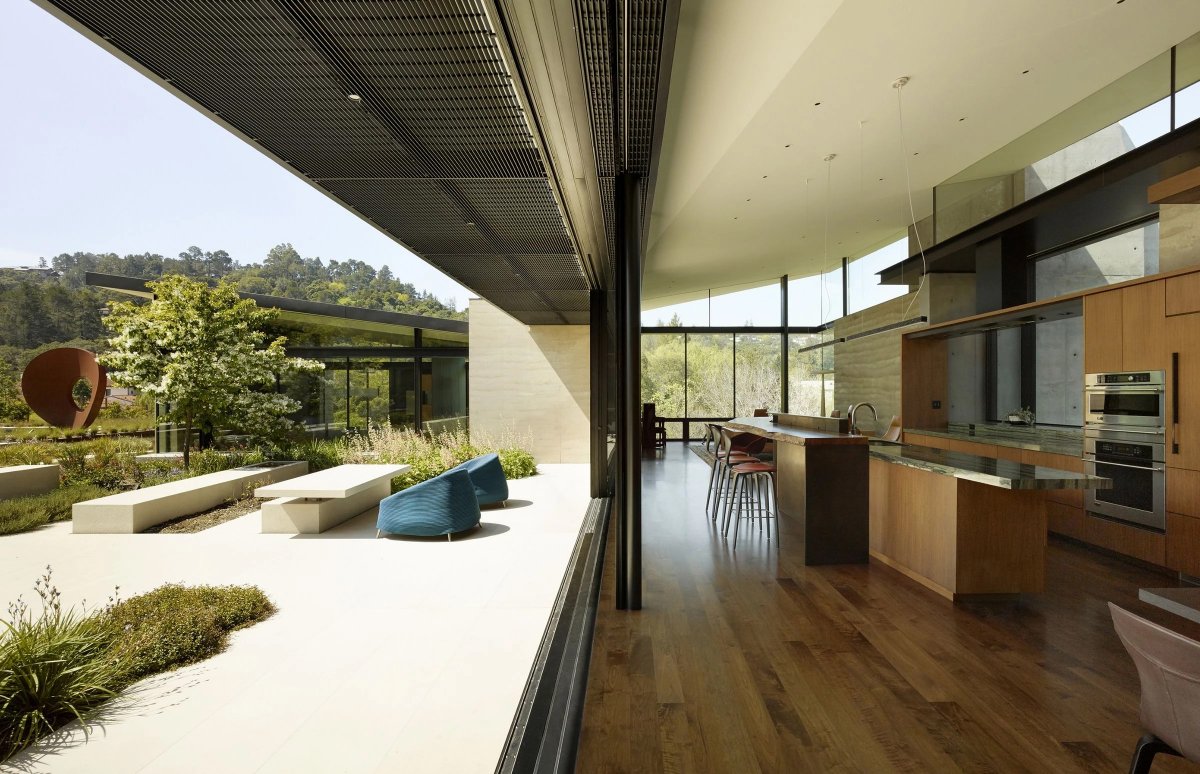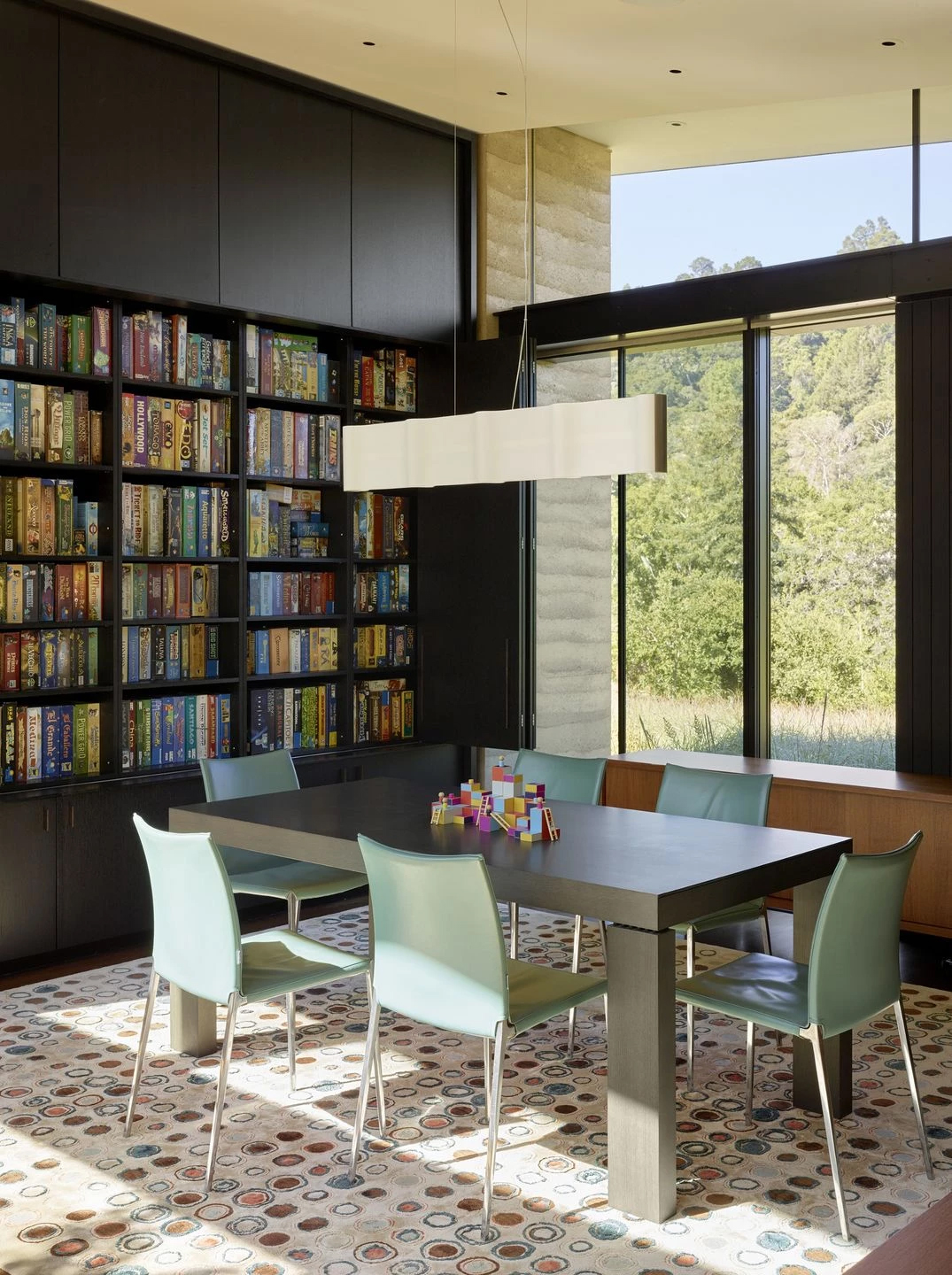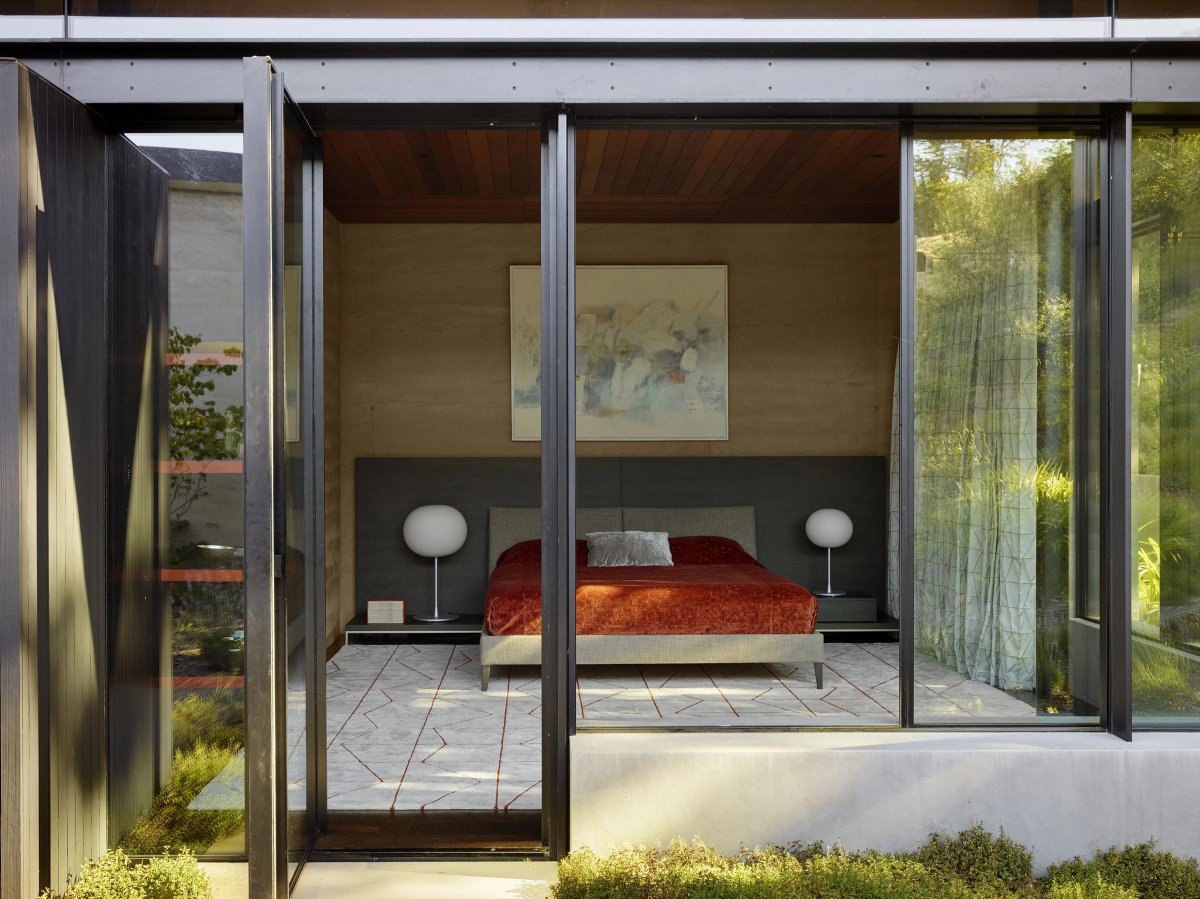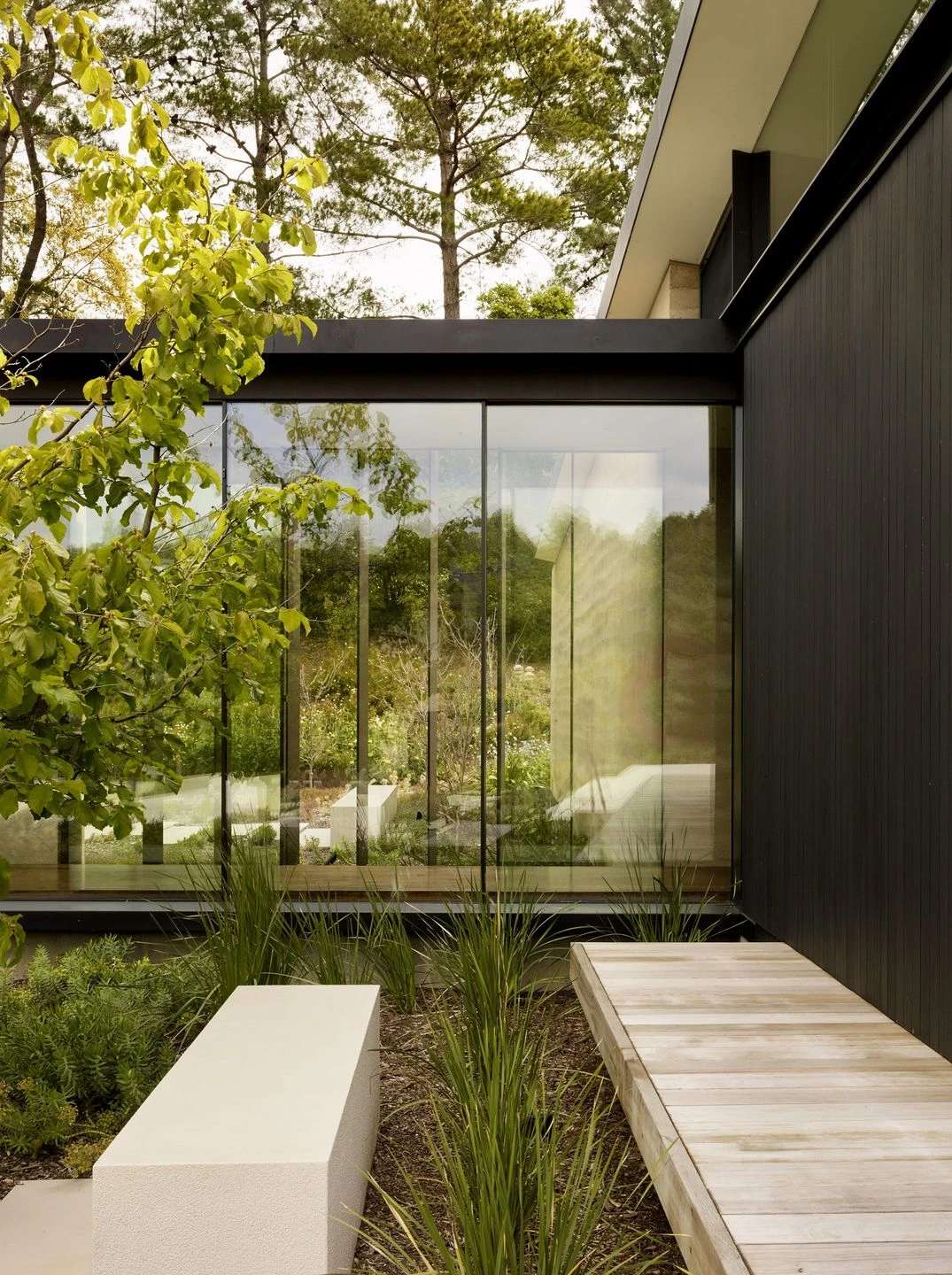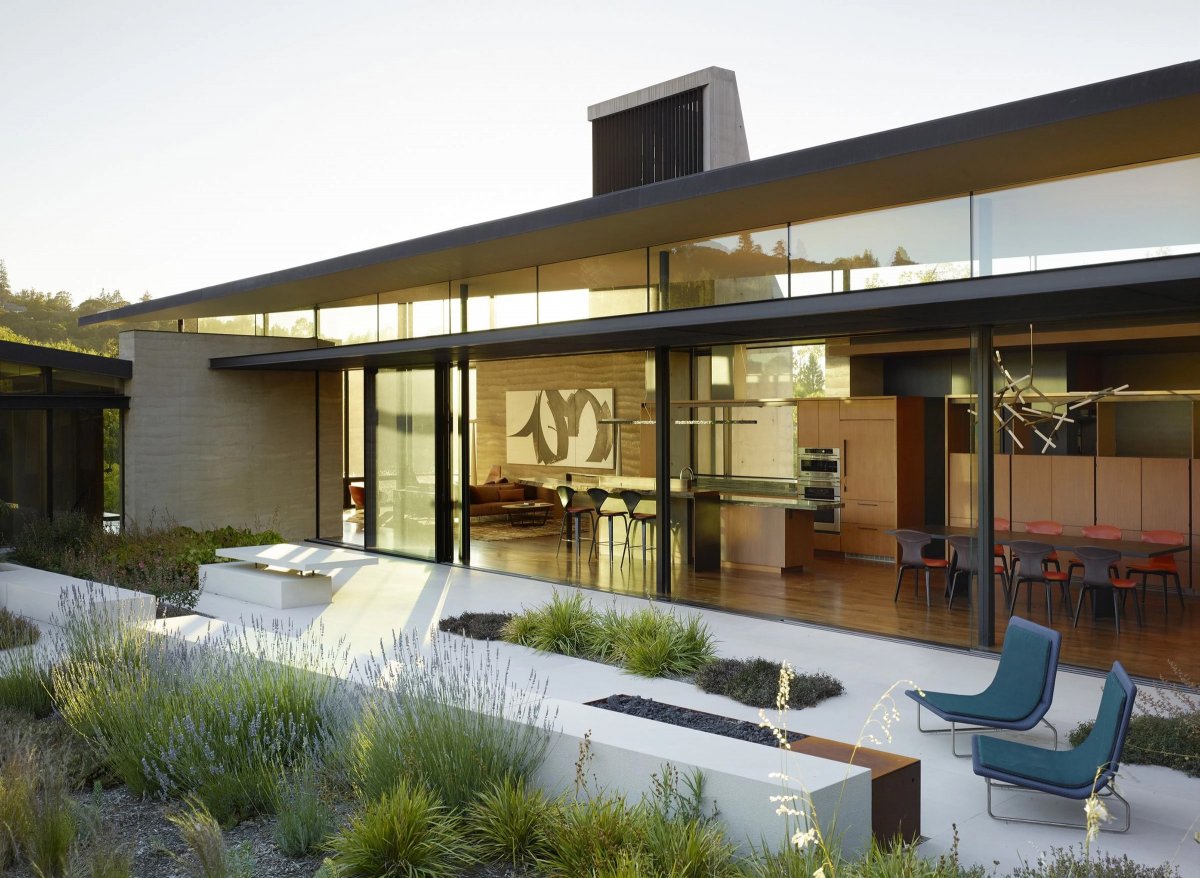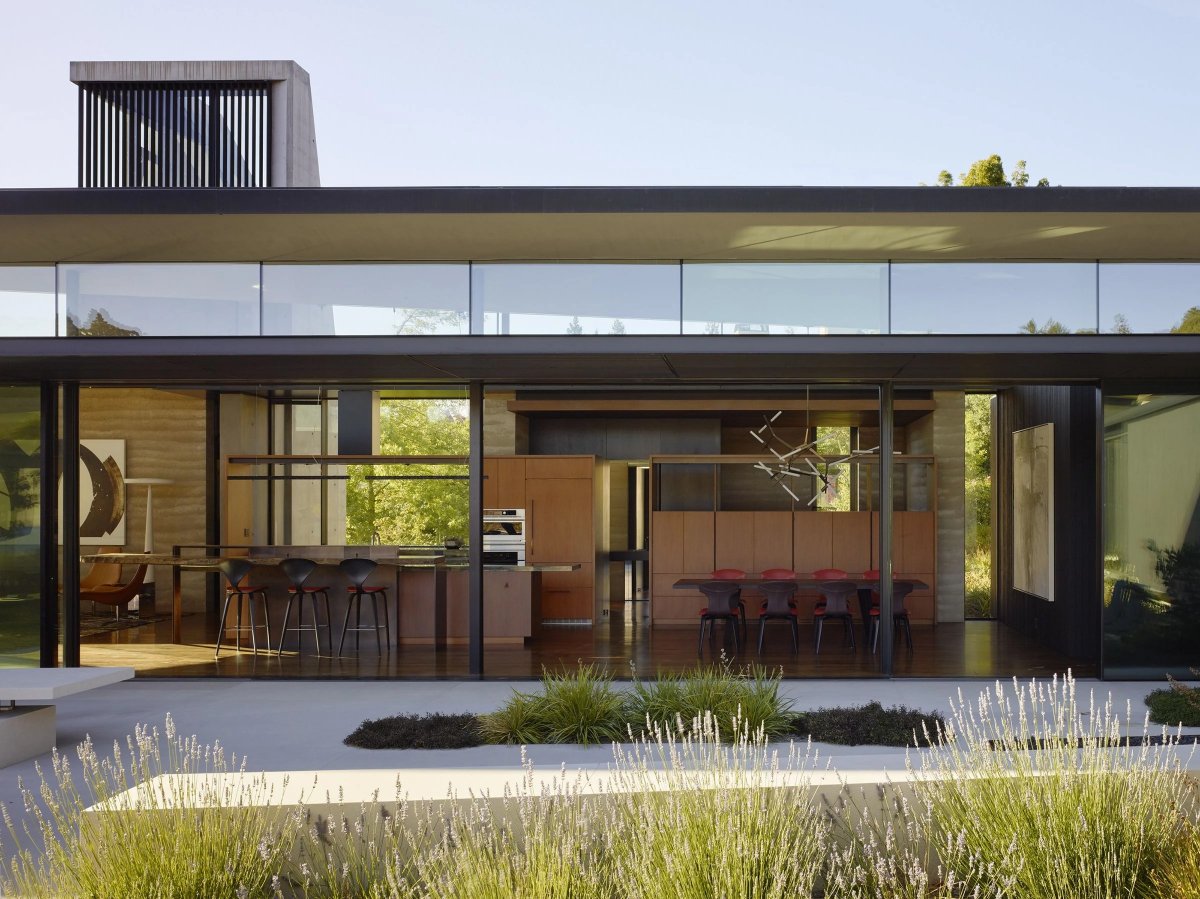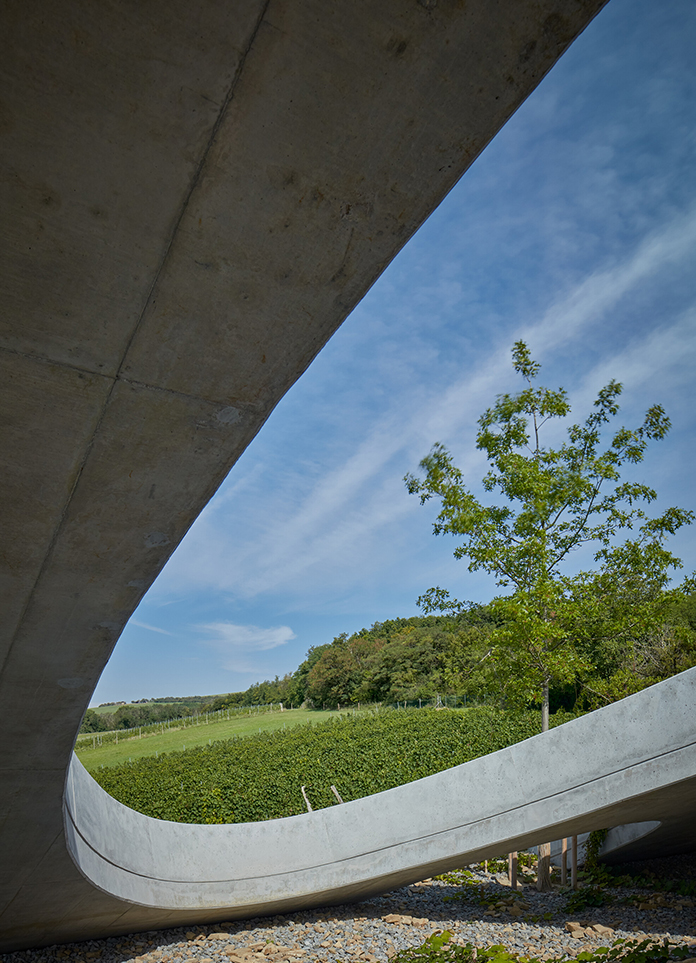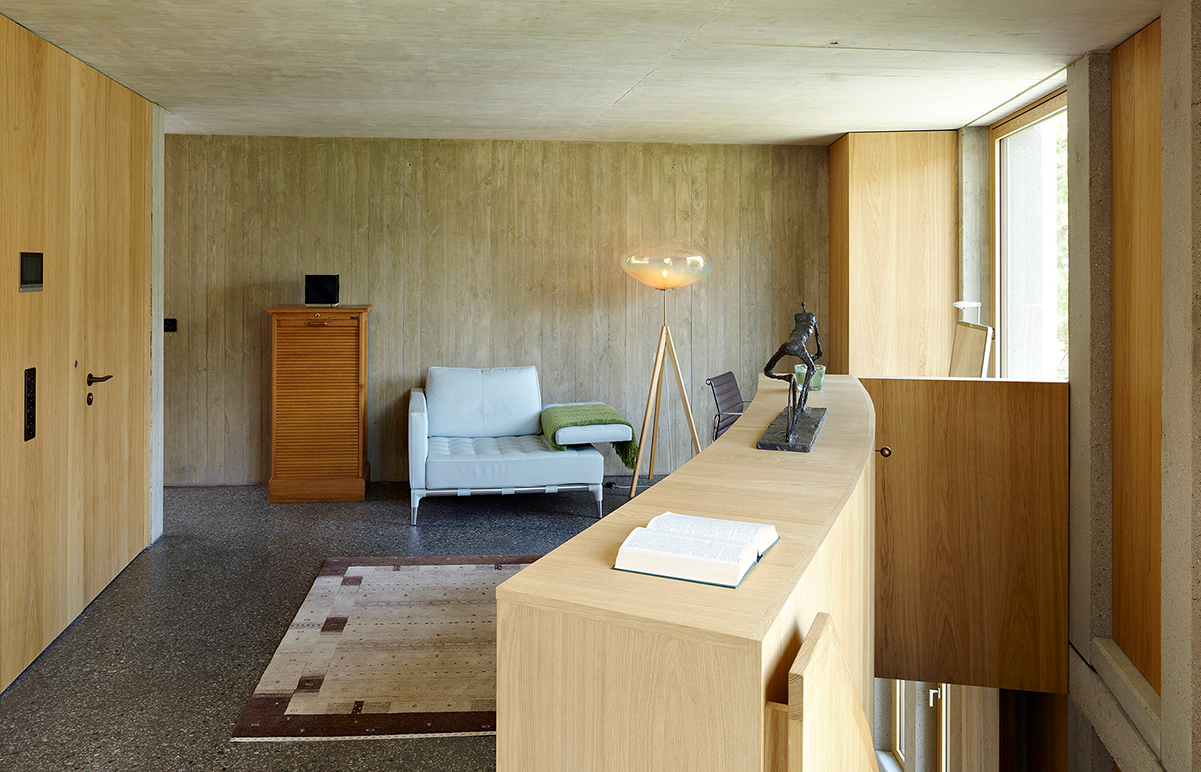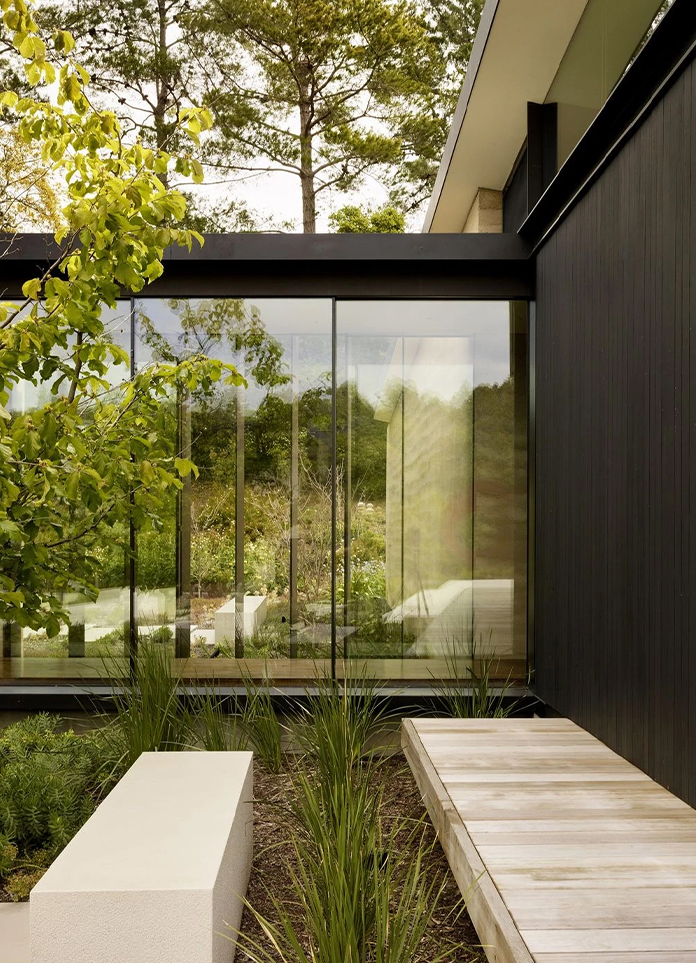
This Net Zero Energy single-family home celebrates its – and the owner – existence in the intersection between earth and sky. In response to a pre-existing graded topography with an artificial elevated plateau, one arrives low onto the site, and ascends through carved spaces into a series of airy glass pavilions. These indoor-outdoor living spaces are anchored by rammed earth walls and sheltered under kite-like floating roofs. Extensive use of glass, much of which is operable, helps to obscure the boundary between inside and outside, connecting the interior to the landscape, meeting the owner’s request to feel as though they are living in a natural garden.
The owners set ambitious sustainability goals from the outset of the process. They proposed LEED Platinum certification and Net Zero Energy, both to guide their own responsible decision making and to be a model for their community. With that as a starting point, the project strove to integrate ecological responsibility holistically into the design of the building, such that sustainability performance and architectural expression become one inseparable whole.
The two principal tectonic components are the rammed earth walls and the folded roof planes. The walls are built using soil harvested on site. They provide thermal mass, regulating temperature fluctuations and participating in the heating and cooling of the interior – and lightening the demand placed on mechanical systems. They are highly durable, pest- and rot-resistant, and very low maintenance These heavy earthen walls bracket space within a seamless landscape, demarcating public and private zones while providing a sensual tactility.
The floating roof planes also integrate multiple sustainable design strategies in a singular gesture. Their asymmetric butterfly forms vector interior spaces outward to the landscape. The folded shape tips solar panels toward the sun. Their valleys direct rainwater to collection cisterns, efficiently draining the roof surface without extensive plumbing while also visually expressing the concept of rainwater harvesting. Their overhangs are calibrated, working in tandem with window shades, for both shade and light - to provide abundant daylight to the interior, passive heat gain in winter, and shade in summer. Their soaring, lightweight forms inspire ones eyes upward to the sky, and juxtapose with the anchoring mass of the earthen walls – strengthening both elements through their mutual contrast.
- Interiors: Aidlin Darling Architecture
- Photos: Matthew Millman
- Words: Qianqian
